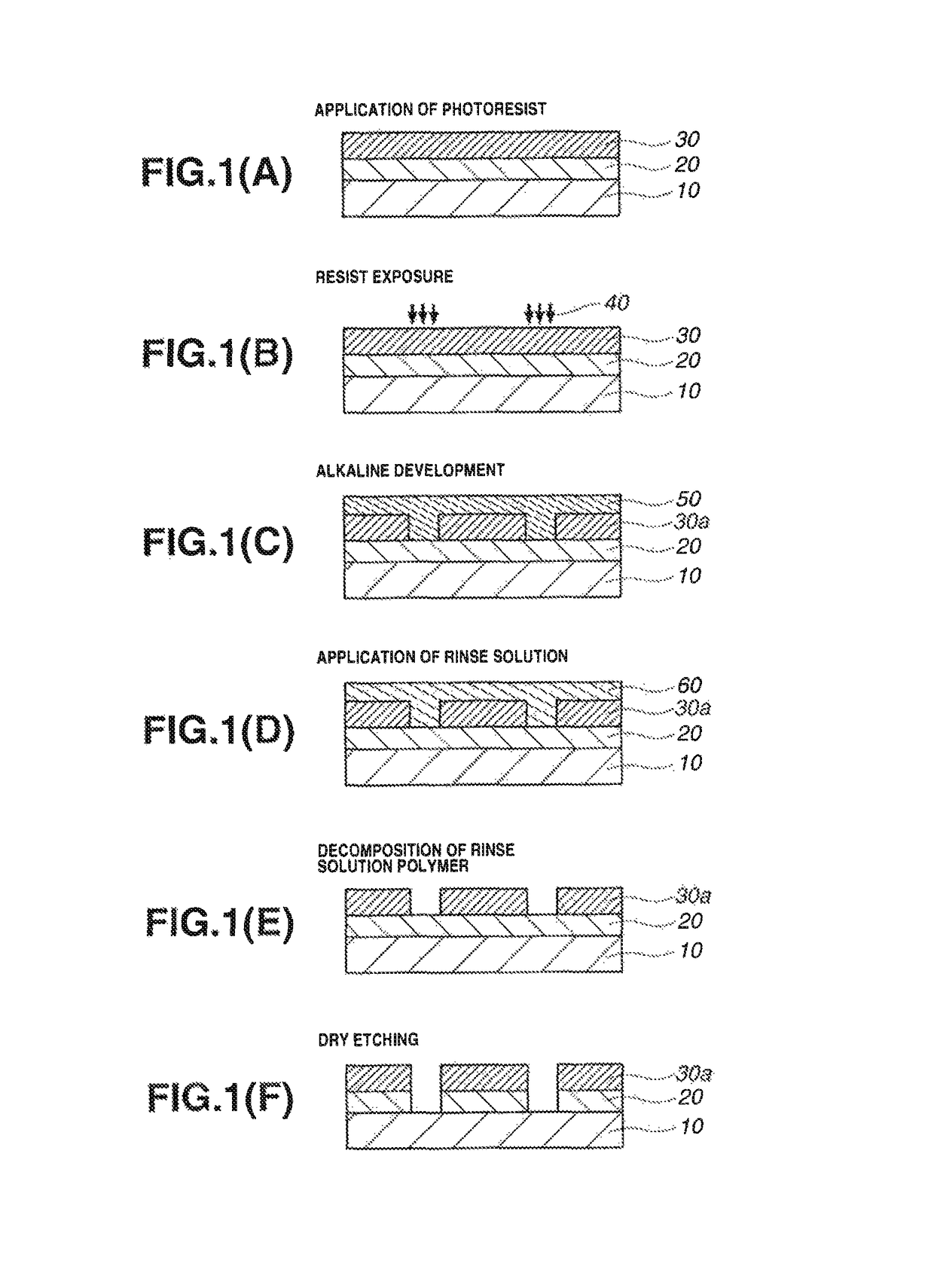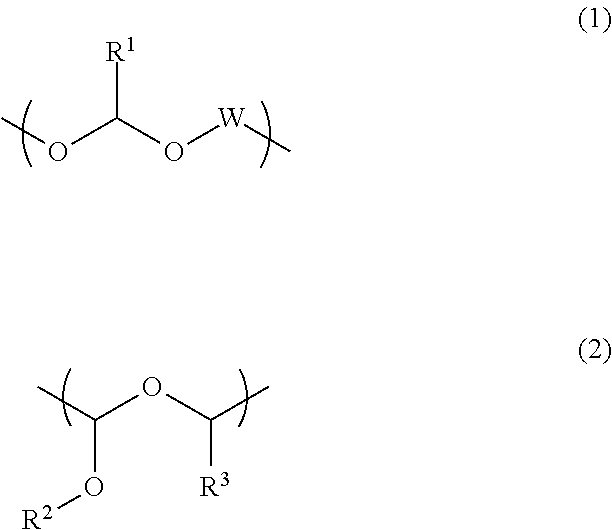Rinse solution for pattern formation and pattern forming process
a technology of pattern formation and solution, applied in the direction of photomechanical treatment, instruments, photomechanical equipment, etc., can solve the problems of low resist etch resistance, low resistance resistance, and high cost of scanners, and achieve the effect of mass productivity
- Summary
- Abstract
- Description
- Claims
- Application Information
AI Technical Summary
Benefits of technology
Problems solved by technology
Method used
Image
Examples
synthesis example 1
Synthesis of Polymer 1
[0098]At room temperature, 100 g of diethylene glycol monovinyl ether was added to a mixture of 3.8 g of a cation exchange resin (Amberlyst® 15) and 100 g of ethyl acetate, followed by 3 hours of stirring. To the reaction solution, 0.8 g of triethylamine was added to quench the reaction. The cation exchange resin was filtered off. The filtrate was concentrated under reduced pressure, obtaining Polymer 1 as viscous liquid.
Polymer 1
[0099]Mw=4,900
[0100]Mw / Mn=2.33
[0101]
synthesis example 2
Synthesis of Polymer 2
[0102]To 20 mL of toluene at −70° C., 3 g of 2-hydroxyvinyl ether, 2 g of acetaldehyde and 0.01 g of methanesulfonic acid were added, followed by 48 hours of reaction. To the reaction solution, 0.02 g of ammoniacal methanol was added to quench the reaction. The filtrate was concentrated under reduced pressure, obtaining Polymer 2.
Polymer 2
[0103]Mw=5,800
[0104]Mw / Mn=2.13
[0105]
synthesis example 3
Synthesis of Resist Polymer 1
[0106]A 2-L flask was charged with 10.5 g of 3-t-butyl-3-cyclopentyl methacrylate, 2.5 g of 3-hydroxy-1-adamantyl methacrylate, 4.4 g of 3-ethyl-3-exo-tetracyclo[4.4.0.12,5.17,10] dodecanyl methacrylate, 3.4 g of tetrahydro-2-oxofuran-3-yl methacrylate, and 40 g of tetrahydrofuran as solvent. In nitrogen atmosphere, this reactor was cooled to −70° C., whereupon vacuum pumping and nitrogen blow were repeated three times. The reactor was warmed up to room temperature, whereupon 1.2 g of azobisisobutyronitrile was added as polymerization initiator. The reaction solution was heated at 60° C. whereupon reaction run for 15 hours. The reaction solution was poured into 1 L of isopropyl alcohol for precipitation. The resulting white solid was filtered and dried in vacuum at 60° C., obtaining a white polymer. The polymer was analyzed by 13C-NMR and 1H-NMR spectroscopy and GPC, with the results shown below.
[0107]Copolymer Compositional Ratio (Molar Ratio)[0108]3-t-...
PUM
| Property | Measurement | Unit |
|---|---|---|
| wavelength | aaaaa | aaaaa |
| size | aaaaa | aaaaa |
| wavelength | aaaaa | aaaaa |
Abstract
Description
Claims
Application Information
 Login to View More
Login to View More - R&D
- Intellectual Property
- Life Sciences
- Materials
- Tech Scout
- Unparalleled Data Quality
- Higher Quality Content
- 60% Fewer Hallucinations
Browse by: Latest US Patents, China's latest patents, Technical Efficacy Thesaurus, Application Domain, Technology Topic, Popular Technical Reports.
© 2025 PatSnap. All rights reserved.Legal|Privacy policy|Modern Slavery Act Transparency Statement|Sitemap|About US| Contact US: help@patsnap.com



